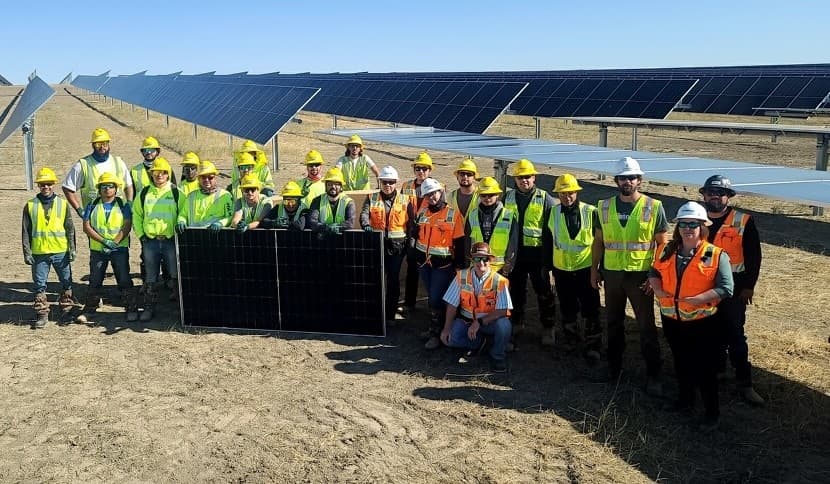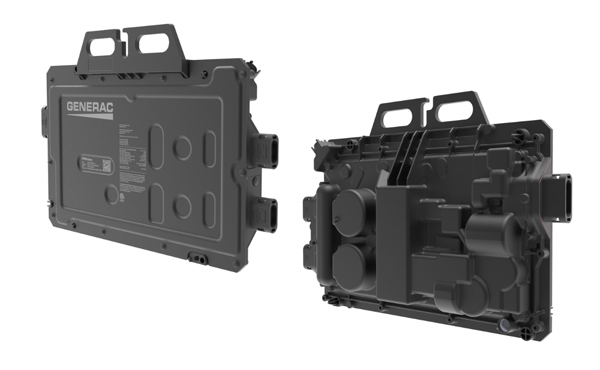Video: Solving solar tracker foundations with Nextracker
Solar tracker powerhouse Nextracker acquired Ojjo, a company specializing in foundation technology and services in June 2024. On The Pitch, Sol Hutson and Charles Almy from Nextracker dig deeper on the importance of solar tracker foundations with Solar Builder Editor Chris Crowell. Watch the full 15-min episode right here, or read through a partial transcript below.
Skip right to a section …
- 0:27 – Why all the recent focus on solar tracker foundations?
- 1:37 – Overview of Ojjo foundation design and installation innovations
- 2:52 – Where does this open up the market for more solar?
- 6:10 – Foundation design impact on terrain-following trackers
- 8:04 – How much can we reduce grading?
- 9:08 – What are other environmental considerations?
- 10:54 – How else are tracker design / install processes changing?
- 14:11 – The changing dynamic of suppliers, EPCs, and solar developers
The challenges of tracker foundations + Ojjo’s solution
Crowell: Ojjo’s patented foundations are now part of the Nextracker portfolio. What is different about the Ojjo foundation?
Almy: The Ojo Foundation is actually a truss foundation. It’s two screws that go into the ground. One thing we realized pretty quickly is the majority of the loads on a tracker are lateral. The best way to resist that is not a stick in the ground; it’s to have a splayed stance. If you just stand with your legs spread apart, you can figure that out.
The other thing we noticed is it’s typical to have three different crews come through to do your harder sites. You have a pre-drill rig, you have a pile driver, and then you have to remediate it to get it right. So, we wanted to do everything. Our focus was one machine gets it done with one crew, and when they’re done, the foundation is complete. We drill and drive directly into the soil at the same time with the machine. Our screws are hollow, so you can put the drill bit through and drill ahead while you’re actually driving the screw.
Watch the animation demonstrating the installation process:
Crowell: Can you go into some examples of ground conditions that our audience has encountered in the past and maybe ruled out, or avoided, or knew that they were going to encounter a lot of refusals, that you’re more confidently installing on with your process and your technology?
Almy: Some EPCs are probably familiar with the term caliche — it’s like a natural concrete that occurs that has been really good to Ojjo, and really terrible to anybody who’s trying to install H pile. We’ve also installed a lot on ballast in more volcanic areas like Oregon. In Texas you have a gradient of clay over limestone, or in the west you have more caliche as well.
It’s not like you get a site and it’s all one thing. That’s a really big deal to EPCs. There’s this risk and uncertainty. You get a Geotech, and it might not be 100% reliable and you might want to have a technology that’s flexible enough to be able to handle some soft spots and some hard spots.
Crowell: Is more of the market open to Nextracker now? Were you avoiding these sites or were you pursuing them but it was just like a big pain?
Almy: This is mostly a pain alleviation technique for the EPCs, and cost reduction because it’s significantly less steel.
Hutson: It also opens up siting options earlier from a developer perspective as well. As they’re looking at securing land to eventually site a project on, they may on first filter, early in their land selection, they may skip locations that they know have got challenging soil conditions.
There’s a very extensive, very long interconnection queue across the U.S. Increasing the land area that you can cost-effectively build solar on, it opens up opportunity to site solar closer to interconnection where you may not have been able to previously.
Terrain-following and environmental considerations
Crowell: Terrain-following is a buzz term in trackers these days, which in my mind is about the north/south rolling hills, and building with articulation. I don’t think about the foundations when when it comes to that, so what role do foundations play in executing a terrain following tracker design?
Almy: We’re kind of expanding the definition of what terrain following means to include topographic but also geotechnical conditions. Reveal window is something really important to the project engineers of EPCs. That is: how much variation can you have on your H piles, or basically the torque tube height above ground at any location. With H piles, you have a very narrow reveal window. With any sort of anchor system, where you have a a triangle — whether it be an anchor or the Ojjo solution — you get penalized a lot less for going high. We have a much bigger reveal window, which allows us to go over things that we previously couldn’t.
Hutson: Along a row, you may have only a 5-ft-wide section that is a wash and you need to place a pile there in order to maintain your tracker row. And to build on BLM land, there oftentimes are requirements to not cut and fill, and to leave those washes as they are. So even a terrain-following tracker may not be sufficient to be able to manage that very narrow deep and steep wash situation, where the Ojo solution as an example certainly can.
Crowell: What are other environmental considerations? Is there anything els in terms of the approach to foundations, of the reveal window you’re talking about that are advantages on BLM or Agrivoltaics projects?
Almy: Another requirement that we’re seeing is a maximum number of times you can track over the same spot. If grading is like a macro soil disturbance, and you’re taking away huge chunks, there’s also a limit now on the micro. The topography on the top is an environmental requirement now, and you can only track over it a certain amount of times while building your tracker so that you don’t disturb the top soil.
Which makes it very difficult for an EPC. … I’ve got a foot of top soil, then I have caliche, and they’re letting me only track through there four times. If you have to do your pre-drill, pile driver, and remediation, you’ve just eaten up four of them before you even start building the rest of the top. It’s kind of nice to be able to do it all in one pass with one machine, and just bang it all out.
Hutson: Being light on land and reducing the number of passes across the site, that also alleviates compaction of the topsoil. The whole grading, and cut and fill topic of course is about not disturbing the topsoil. So, if you’re able to avoid disturbing the topsoil, and able to reduce the compaction impact of having multiple passes, you can a lot of times leave native vegetation ground cover in place.
Crowell: Now that we know we can do these things, are timelines getting shortened? What else is happening in terms of process?
Pick up the rest of the conversation right here:





Comments are closed here.